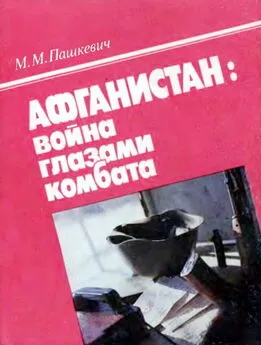Михаил Супотницкий - Биологическая война (Часть 3)
- Название:Биологическая война (Часть 3)
- Автор:
- Жанр:
- Издательство:Кафедра, Русская панорама
- Год:2013
- Город:Москва
- ISBN:978-5-93165-328-0
- Рейтинг:
- Избранное:Добавить в избранное
-
Отзывы:
-
Ваша оценка:
Михаил Супотницкий - Биологическая война (Часть 3) краткое содержание
Часть 3. Частная неправильная эпидемиология.
Биологическая война (Часть 3) - читать онлайн бесплатно полную версию (весь текст целиком)
Интервал:
Закладка:
Wittmann T. J., Biek R., Hassanin A. et al. Isolates of Zaire ebolavirus from wild apes reveal genetic lineage and recombinants // Proc. Natl. Acad. Sci. USA. 2007. V. 104. № 43. P. 17123—17127.
Woker G. We wurde ein neuer Krieg aussehen? — Zurich, Leipzig, 1931.
Wolf-Watz H., Portnoy D., Bolin I. et al. Transfer of the virulence plasmid of Yersinia pestis to Yersinia pseudotuberculosis // Infec. Immun. 1985. V. 48. № 1. P. 241–243.
Woods J. B. Antimicrobials for biological warfare agents // Biological weapons defense. N. J., 2005. P. 285–315. WorobeyM., HolmesE. C. Evolutionary aspects of recombmation in RNA viruses // J. Gen. Virol. 1999. V. 8. P. 2535–2543.
Wozniak R A. F., Touts D. E., Spagnoletti M et al. Comparatn e ICE genomics: ins,gilts into the evolution of the SXT/R391 family of ICEs // PLoS Genet. 2009. V. 5. № 12. el000786.
Wu D., Aronson A. I. Localized mutagenesis defines regions of the Bacillus thuringiensis deltaendotoxin involved in toxicity ana specificity // J. Biol. Chem 1992. V. 267. P. 2311–2327.
Wu F, Fan S., Martiniuk F. et al. Protective effects of anti-ricin А-chain antibodies delivered intracellularly against ricin-induced cytotoxicity // World. J. Biol. Chem. 2010. V. 26. № l. P. 188–195.
Wu Lien Ten U. A., ChunJ. W, Pollitzen R. et al. Plague. Shanghai, 1936.
Wu S. J. KollerC. N., Miller D.L. atal Enhanced toxicity of Bacillus thuringiensis Cry ЗА delta-endotoxin in coleopterans by mutagenesis in a receptor binding loop // FEBS Lett. 2000. V. 473. P. 227–232.
WuS. Y, McMillan N. A. J. Lipidic systems for in vivo siRN A delivery // AAPSJ. 2009. V. 11, № 4. P. 639–642.
Wyers М., Formenty P, Cherel Y et al. Histopathological and Immunohistochemical studies of lesions associated with Ebola virus in a naturally infected chimpanzee // J. Infec. Dis. 1999.V. 179 (Suppl 1): S54-S59.
Wyssokowitsch et Zabolotny // Ann. Inst. Past. 1897. V. XI. P. 665.
Yamaizumi М., Mekada E., Uchida T. et al. One molecule of diphtheria toxin fragment A introduced into a cell can kill the cell // Cell. 1978 V 15. P. 245–250.
Yamazaki Y., Matsunaga Y., Tokunuga Y Snake venom vascular endotheiial growth factors (VEGF-Fs) exclusively vary their structures and functions among species // J. Biol. Chem. 2009. V. 284, № 15. P. 9885–9891.
Yao J. S., Kariwa H., Takashima I. et al. Antibody-dependent enhancemen* of hantavirus infection in macrophage cell lines *f/ Arch. Viroi i992. V. 122. № 1–2. P. 107–118.
Yeaman M. R., Roman E., Baca O. Antibiotic susceptibilities of iwo Coxiella burnedi isolates implicated in distinct clinical syndromes // Antimicrob. Agents Chemother. 1989. V. 33. № 7. P. 1052–1057.
Yim G., Wang H. H. Davies J. Antibiotics as signaling molecules // Phil. Trans. F. Soc. B. 2007. V. 362. P. 1195–1200.
Yin H. L., Lin H. S, Huang С. С et al. Tetrodotoxication with Nassautu glans. a poss.tility ot tetrodoioxin spreading in marine products near Pratas island // Am. J. Trop. Wed. Hyg. 2005. V. 73 № 5. P. 985–990.
Yingst S. L., Huzella L. М., Chuvala L. et al. A rhesus macaque (Macaca mulatta) model of aerosol-exposure brucellosis (Brucella suis): pathology and diagnostic implications // J. Med. Microbiol. 2010. V. 59. P. 724–730.
Yotsu-Yamashita M. Chemistry of puffer fish toxin // J. Toxicol.: Toxin Rev. 2001. V. 20. P. 51–66.
Yotsu-Yamashita M., Kim Y. H., Dudley S. C. et al. The structure of zetekitoxin AB, a saxitoxin analog from the golden frog Atelopus zeteki: a potent sodium channel blocker // Proc. Natl. Acac. Sci. USA. 2004. V. 101. P. 4346–4351.
Yu Li, Carroll D ., Gardner S. et al. On the origin of smallpox Correlating variola phytogenies with historical smallpox records // Proc. Natl. Acad. Sci USA 2007. V. 104. P. 15787—15792.
Yun N. E, Peng В. H., Bertke A. S/ et al. CD4 +T cells provide protection against acute lethal encephalitis caused by Venezuelan equine encephalitis virus // Vaccine. 2009. V. 19. № 27. P. 4064–4073.
Zacks M. A., Paessler S. Encephalitic Alphaviruses // Vet. Microbiol. 2010. V. 140. № 3–4 (281. doi:10.1016/ j.vetmic.2009.08.023).
Zaiss A. K., Machado H., Herschman H. R. The QIinfluence of innate and pre-existing immunity on adenovirus therapy // J. Cell Biochem. 2009. V. 108. № 4 (778 do.:10.1002/jcb.22328).
Zeh H. J., Bartlett D. L Development of a replication-selective, oncolytic poxvirus for the treatment of human cancers // Cancer Gen. Ther. 2002. V. 9. P. 1001–1012.
Zeng J., Wang S. Enhanced gene delivery to PC 12 cells by a cauonic polypeptide // Biomaterials. 2005. V 26. P. 679–686.
ZentnerR. J. Techniques of aerosol formation // Bact. Rev. 1961. V. 25. № 3. P. 188–193.
Zhang J. Evolution by gene duplication: an update // Trends. EcVol 2003 V. 18. № 6. P. 292–298.
Zhang X. K, La Russa V. F., Reiser J. Transduction of bone-marrow-derived mesenchymal stem cells by using lentivirus vectors pseudotyped with modified RD114 envelope glycoproteins // J. Virol. 2004. V. 78. P. 1219–1229.
Zhang Y., Calon F., Zhu C. et al. Intravenous nonviral gene therapy causes normalization of striatal tyrosine hydroxylase and reversal of motor impairment in experimental parkinsonism // Hum. Gene. Ther 2002. V. 14. P. 1–12.
Zimmer T. Effects of tetrodotoxin on the mammalian cardiovascular system // Mar. Drugs. 2010. V. 8. P. 741–762.
Zinn-Justin S., Roumestand C., Gilquin B. et al. Three-dimensional solution structure of curaremimetic toxin from Naja nigricillis venom: a proton NMR and molecular nodehng study // Biochemistn. 1992. V. 31. P. 11335-11347.
ZvbayG., Balfour R., ChubakB. et al. Agents ofbioterrorism. Pathogens and their weaponization. N. Y., 2005.
Supotnitsky M. V. Biological warfare. Introduction to the epidemiology of artificial epidemic processes and biological lesions: monograph. — M.: «Cathedra», «Russkaja panorama», 2013. 1136 p.: Il.
The author is a Russian scientist, a former military microbiologist, the colonel of medical service reserve. The purpose of the work is justification of the third section of epidemiology, epidemiology of artificial epidemic processes, which develop as a result of use of biological weapons or acts of biological terrorism. The monograph comprises three parts. The first one is devoted to the history of biological warfare and biological terrorism.
The second part of the book is the rationale properly for the epidemiology of artificial epidemic processes (termed by the author “incorrect epidemiology”). This part examines the object, purpose and objectives of incorrect epidemiology, provides a classification of biological threats which takes into account recent advances in genetics of microorganisms and the development of nanobiotechnology, and summarizes biological damaging agents. Further in this part, principles are considered of the epidemiological investigation of artificial epidemic processes and specific biological lesions. The methodology of detection of bioterrorist organizations is presented.
The third part of the book is devoted to the specifics of incorrect epidemiology in relation to epidemic outbreaks (poisoning) caused by micro-organisms (toxins) considered to be the most dangerous agents of biological warfare. The data are presented on the microbiology of these agents, their pathogenicity factors, taxonomy, origin, molecular epidemiology, ecology, natural epidemiology, infective (damaging) doses, distinctive features of genetically modified strains, and other information necessary to establish commitment of the use of biological weapons or biological terrorist act.
Diagnosis of artificial lesion by a biological agent is based on the comparison of the epidemiology, clinical manifestations, pathologic anatomy and pathomorphology that are characteristic of cases of the disease resulting from natural infection (poisoning) to those that may occur as a result of the deliberate introduction of the biological agent into the human body. Included are case records of people who were victims of natural or artificial infection (poisoning) and the results of simulating experiments on animals.
The book is intended for a broad range of scientists, physicians, health care and law enforcement officials, and is primarily aimed at professionals of the basic level, who are usually the first to face the consequences of acts of terrorism and sabotage.
Reviewer:S. V. Petrov, Ph.D., winner of the Lenin Prize in 1991, Colonel General in retirement. In 1989–1991, Chief of Chemical Troops USSR, 1991–2001 Head of Radiation, Chemical and Biological Defense Troops of the Russian Federation (Moscow).
Рецензент: С. В. Петров, доктор технических наук, лауреат Ленинской премии 1991 г., генерал-полковник в отставке. В 1989–1991 гг. начальник Химических войск СССР; в 1991–2001 гг. начальник Войск радиационной, химической и биологической защиты Российской Федерации (Москва).
Примечания
1
По R. Keim et al. (2000).
2
Подробнее о способах генетического переноса см. в разд. 2.2.2 «Механизмы вмешательства в геном бактерий».
3
Миноциклин — полусинтетическое производное тетрациклина. У препарата отсутствует перекрестная устойчивость с тетрациклинами.
4
В основном эти неудобства были связаны с гомологичной рекомбинацией и действием рестриктирующих ферментов бацилл, при водящих к нестабильности чужеродных плазмид. Поэтому такие эксперименты тогда старались выполнять, используя в качестве реципиента мутантные В. subtilis с отключенными системами рекомбинации и рестрикции (штаммы MI 112, МI119, МI120 и др.).
5
В экспериментах используется штамм Ames с искусственной устойчивостью к ципрофлоксацину. Его природный вариант обладает резистентностью к пенициллинам третьего поколения и способностью преодолевать иммунитет, создаваемый коммерческими сибиреязвенными вакцинами. Это его «террористы» применили в США для совершения так называемой «почтовой атаки» осени 2001 г., сыгравшей главную роль в нагнетании в мире обстановки страха перед якобы возрастающей угрозой биотерроризма со стороны Саддама Хусейна (см. разд. 1.12.4). Тогда ципрофлоксацин помог избежать массовой гибели американских граждан от сибирской язвы (см. далее «Клинические примеры искусственно вызванной сибирской язвы»).
Читать дальшеИнтервал:
Закладка:
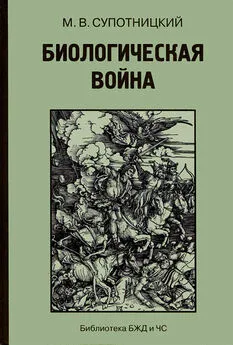
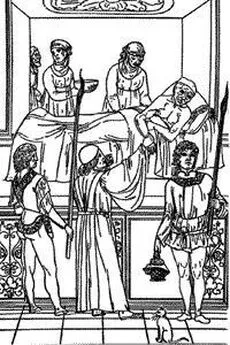

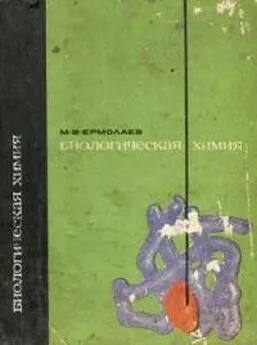

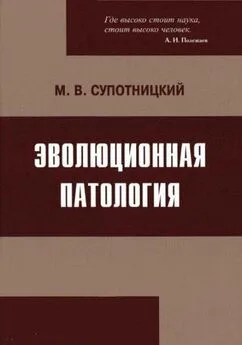
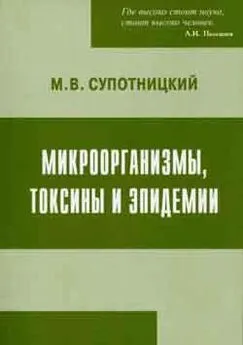
![Михаил Супотницкий - Очерки истории чумы. Книга II. Чума бактериологического периода [без иллюстраций]](/books/1084186/mihail-supotnickij-ocherki-istorii-chumy-kniga-ii.webp)
![Михаил Супотницкий - Очерки истории чумы. Книга I. Чума добактериологического периода [без иллюстраций]](/books/1084187/mihail-supotnickij-ocherki-istorii-chumy-kniga-i-ch.webp)
